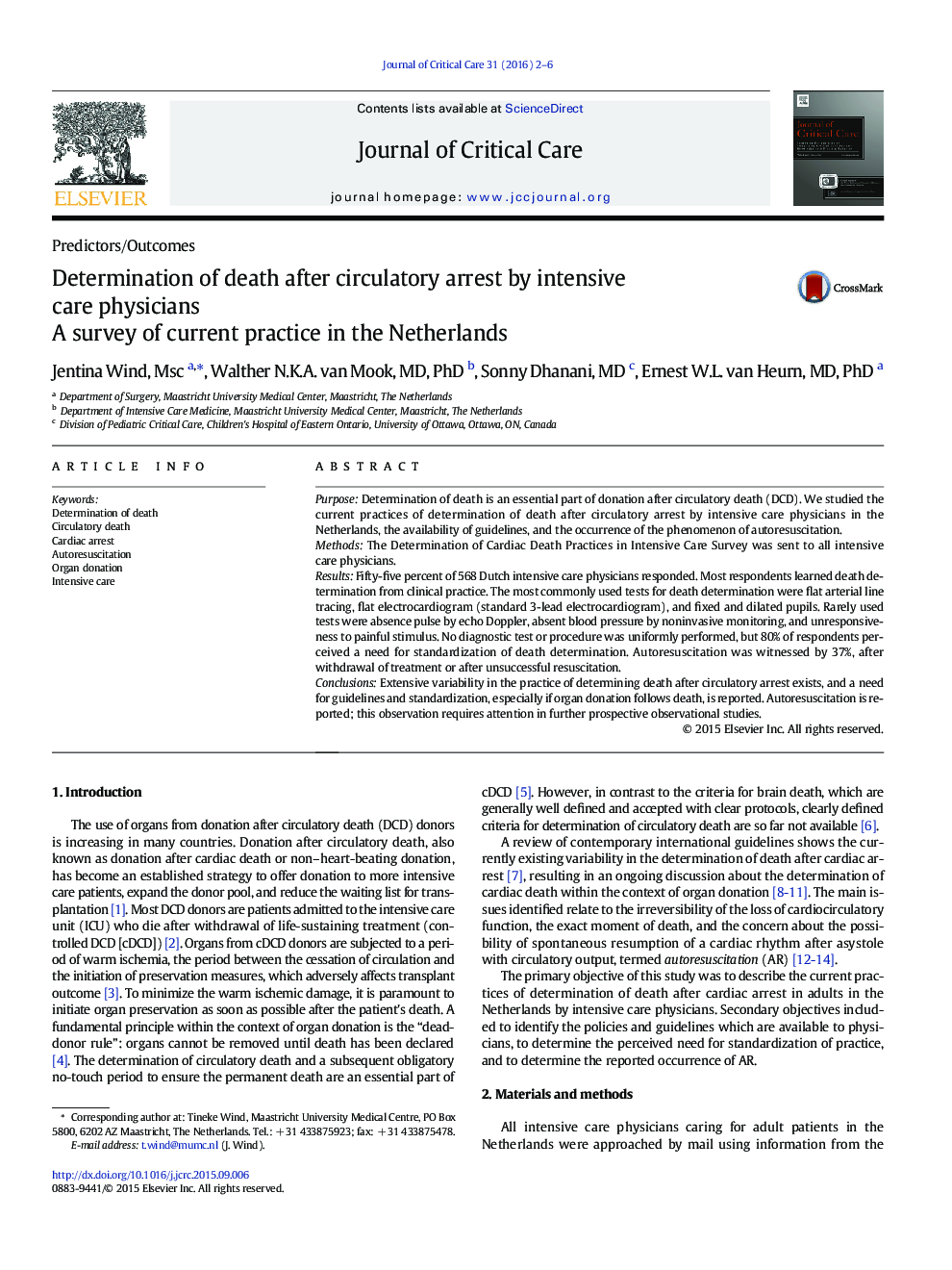| Article ID | Journal | Published Year | Pages | File Type |
|---|---|---|---|---|
| 5885013 | Journal of Critical Care | 2016 | 5 Pages |
PurposeDetermination of death is an essential part of donation after circulatory death (DCD). We studied the current practices of determination of death after circulatory arrest by intensive care physicians in the Netherlands, the availability of guidelines, and the occurrence of the phenomenon of autoresuscitation.MethodsThe Determination of Cardiac Death Practices in Intensive Care Survey was sent to all intensive care physicians.ResultsFifty-five percent of 568 Dutch intensive care physicians responded. Most respondents learned death determination from clinical practice. The most commonly used tests for death determination were flat arterial line tracing, flat electrocardiogram (standard 3-lead electrocardiogram), and fixed and dilated pupils. Rarely used tests were absence pulse by echo Doppler, absent blood pressure by noninvasive monitoring, and unresponsiveness to painful stimulus. No diagnostic test or procedure was uniformly performed, but 80% of respondents perceived a need for standardization of death determination. Autoresuscitation was witnessed by 37%, after withdrawal of treatment or after unsuccessful resuscitation.ConclusionsExtensive variability in the practice of determining death after circulatory arrest exists, and a need for guidelines and standardization, especially if organ donation follows death, is reported. Autoresuscitation is reported; this observation requires attention in further prospective observational studies.
